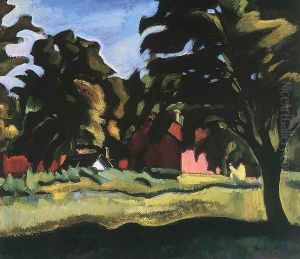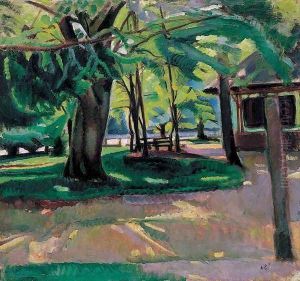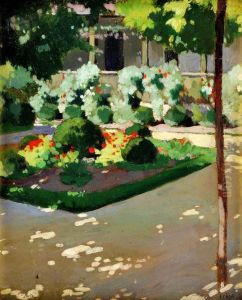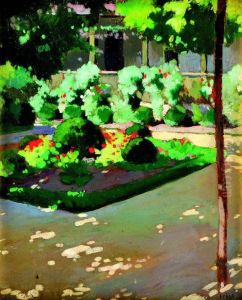Andor Eros Paintings
Andor Eros, born in 1895 in Hungary, was a 20th-century Hungarian artist known for his contributions to graphic art, painting, and illustration. His early life and education were marked by the rich cultural environment of Hungary during the pre-World War I era. Eros developed his artistic skills at a time when Hungarian art was influenced by various European movements, from Art Nouveau to Post-Impressionism.
After his initial education, Eros continued to refine his artistic vision. His style evolved over the years, and he became particularly noted for his graphic works. Eros demonstrated a keen ability to blend traditional Hungarian motifs with contemporary trends, a talent that garnered him recognition in his home country and abroad.
During the interwar period, Eros's career progressed as he became involved in the vibrant cultural scene of Budapest. He produced illustrations for books and magazines, which highlighted his skill in creating evocative imagery that captured the essence of the texts he was complementing. His illustrations often featured elegant lines and a clear, expressive style that communicated complex emotions and narratives.
The turmoil of World War II and the subsequent political changes in Hungary affected Eros's life and work, as they did for many artists of his generation. Despite the challenges of the era, he continued to work and adapt, showcasing the resilience and innovation that characterized much of his artistic output.
Eros lived through the significant shifts in Hungary's political landscape, from the fallout of World War I to the rise and fall of the Austro-Hungarian Empire, two world wars, and the establishment of a communist government. Throughout these changes, he continued to pursue his art until his death in 1977. Andor Eros left behind a legacy that reflects the complexities of 20th-century Hungarian art, an oeuvre that remains an important part of the nation's cultural heritage.



